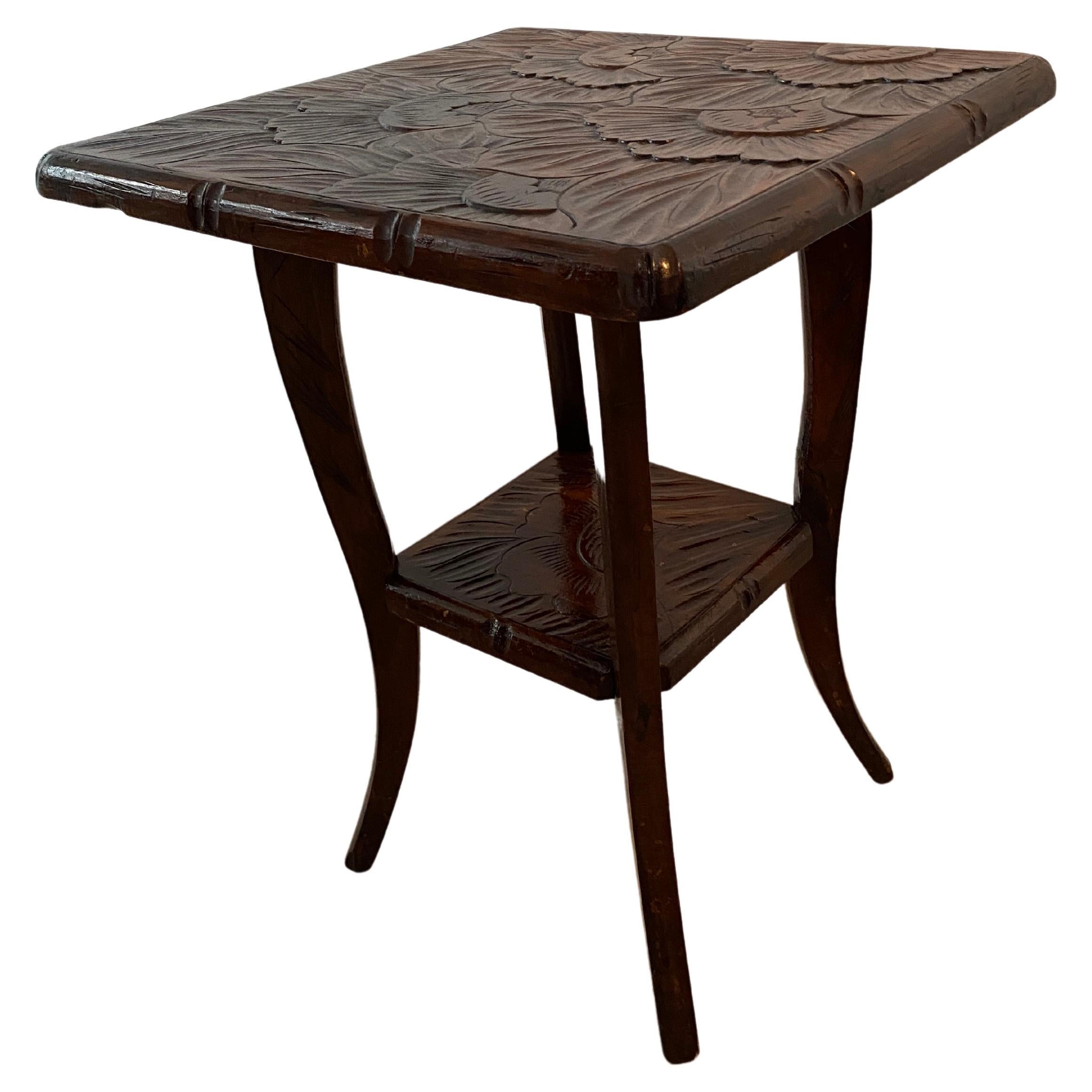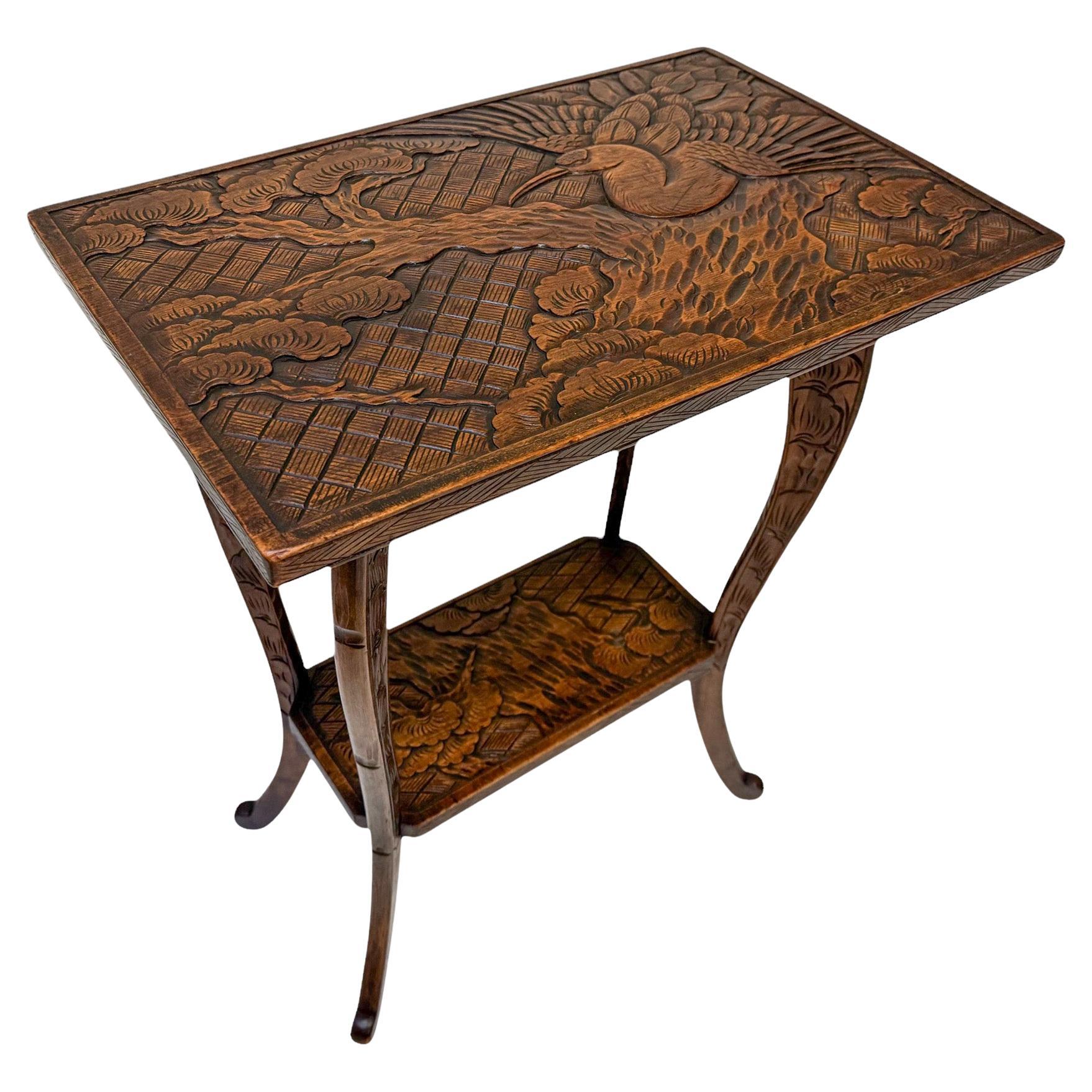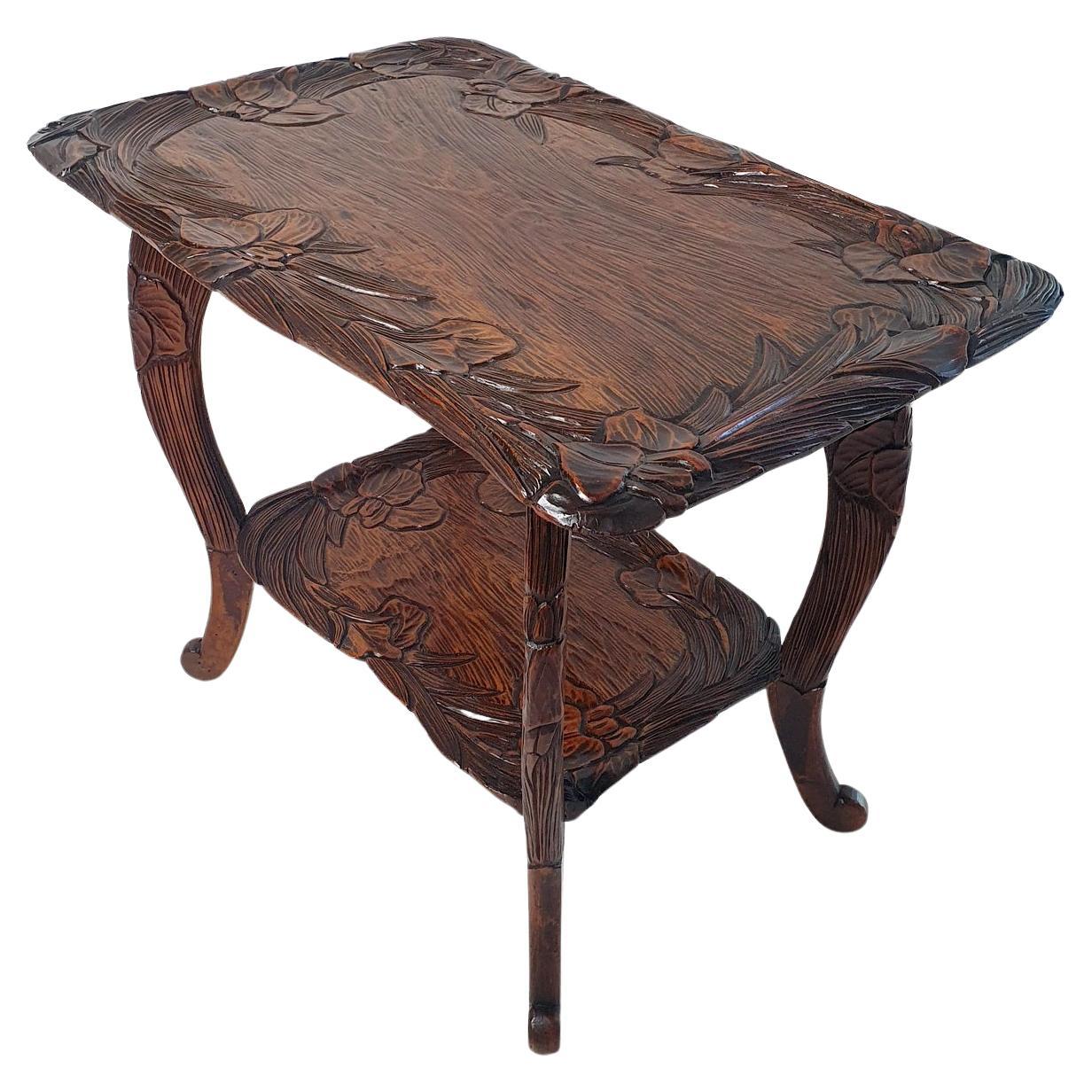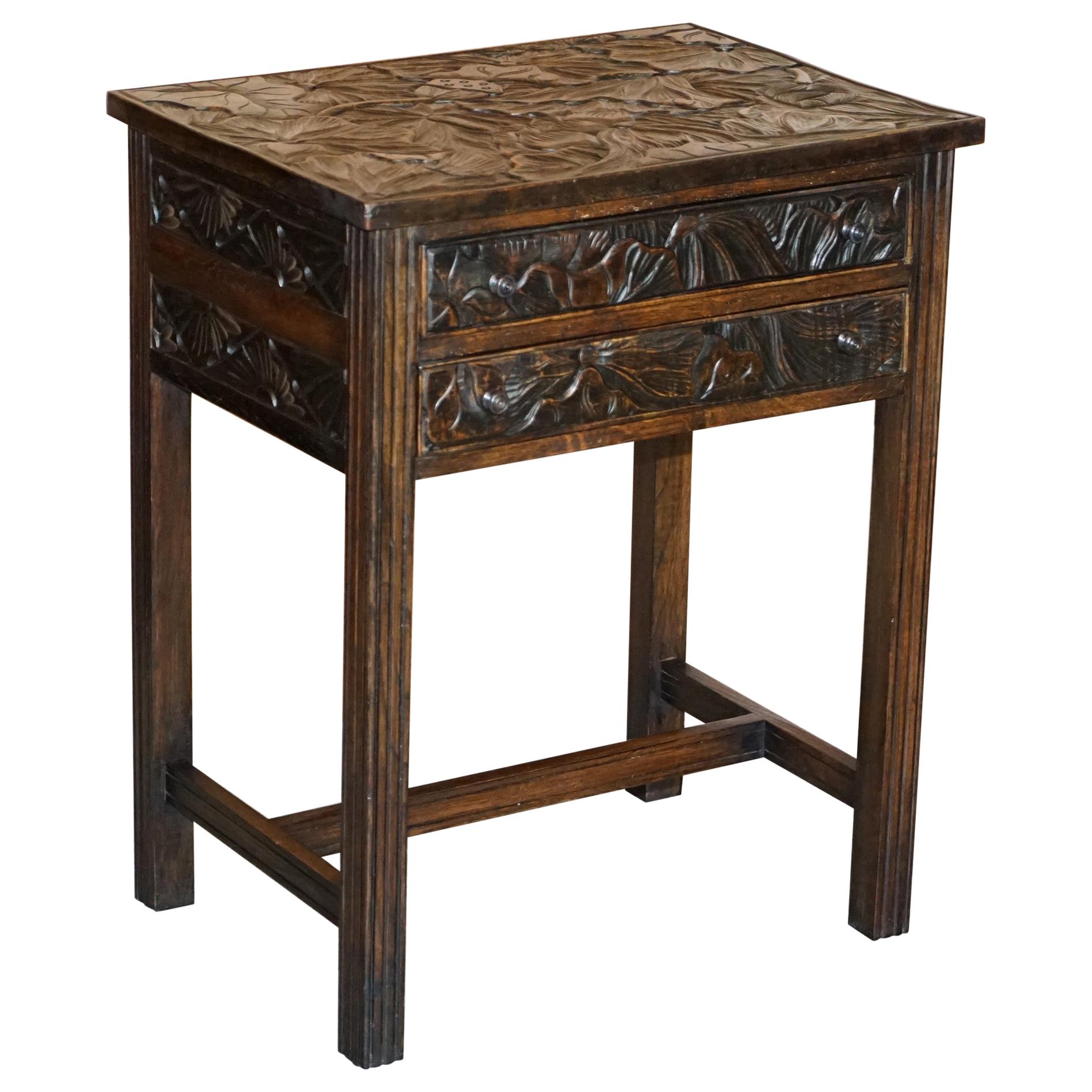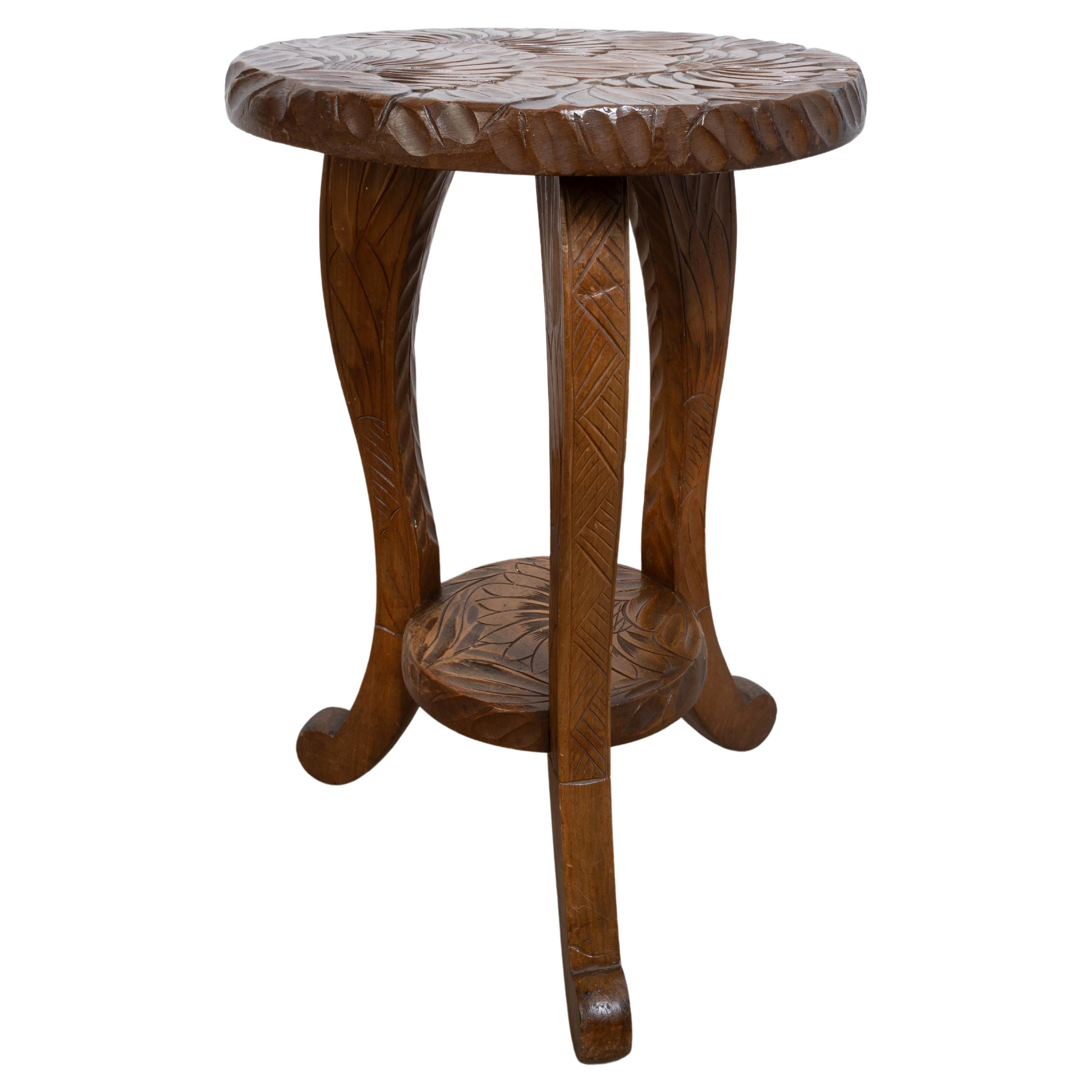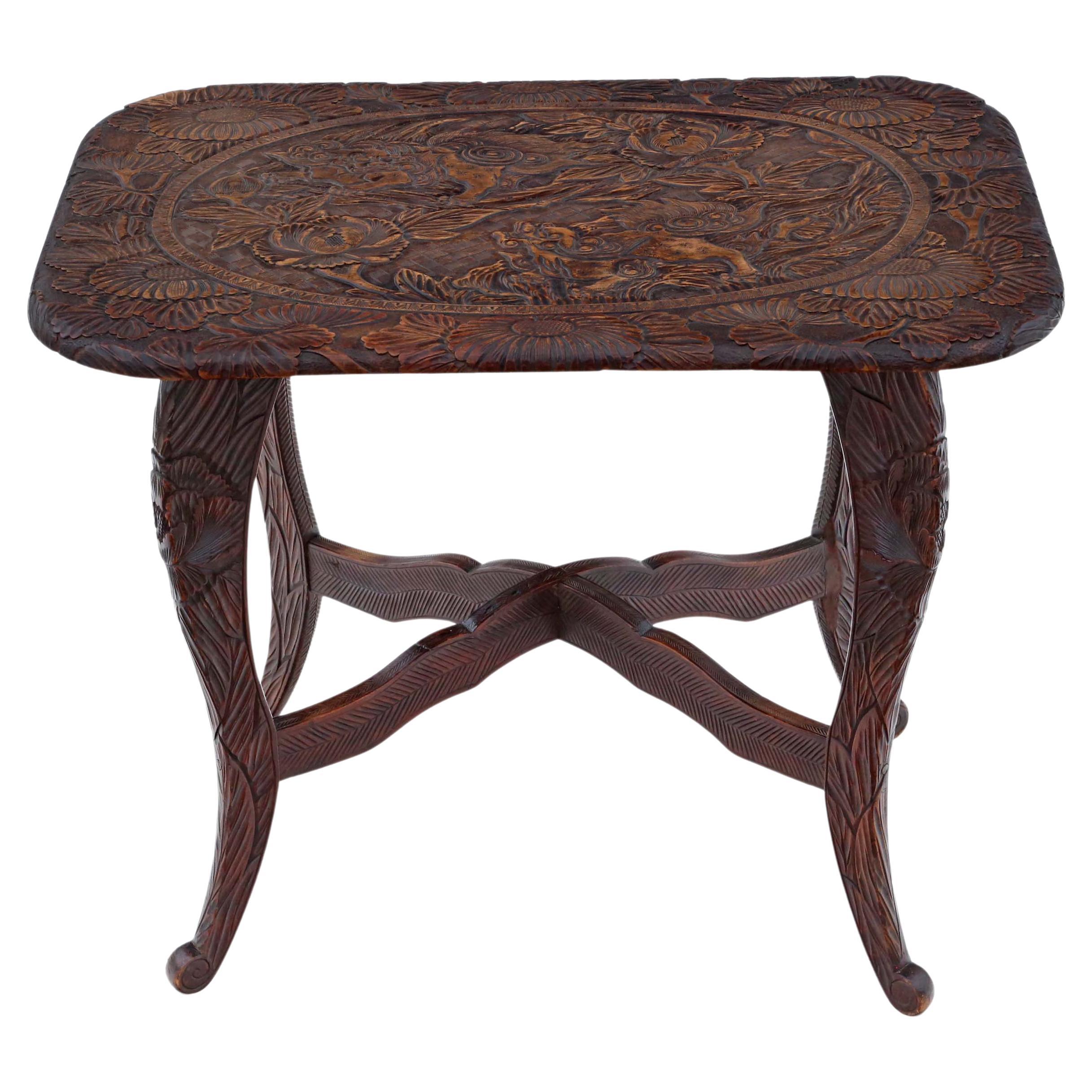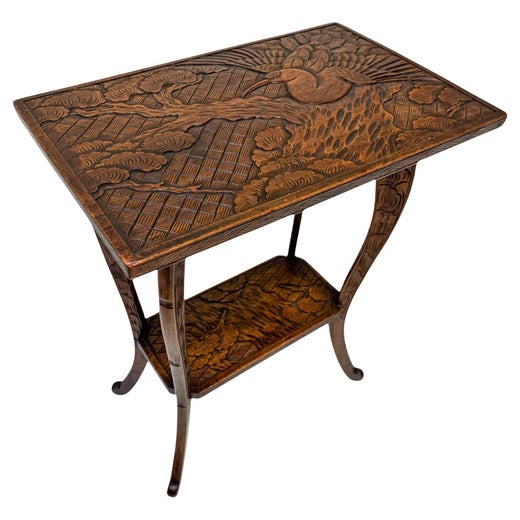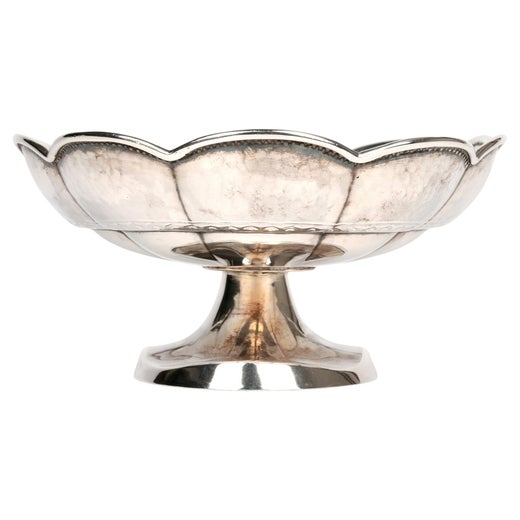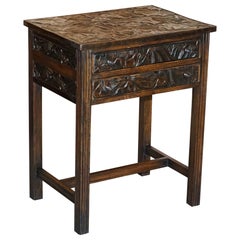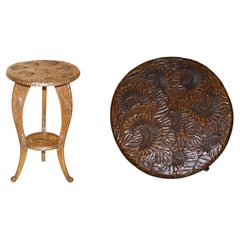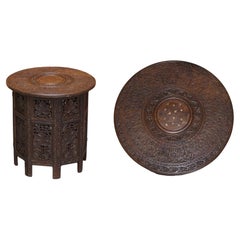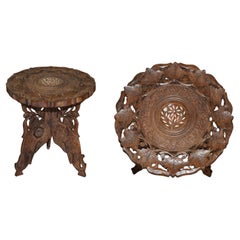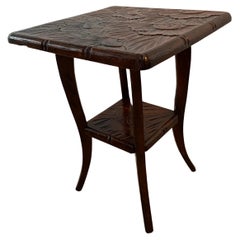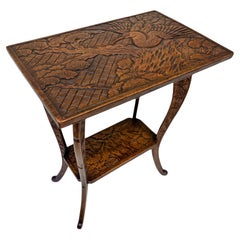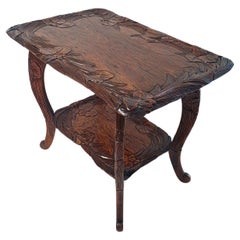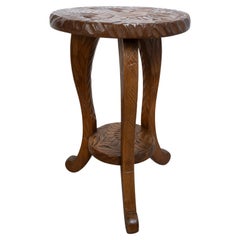Liberty's London Three Monkey Hear See Speak No Evil Carved Coffee Side Table
About the Item
- Creator:Liberty & Co. (Retailer),Liberty of London (Retailer)
- Dimensions:Height: 26.78 in (68 cm)Width: 34.26 in (87 cm)Depth: 20.87 in (53 cm)
- Style:Edwardian (Of the Period)
- Materials and Techniques:
- Place of Origin:
- Period:1900-1909
- Date of Manufacture:1905
- Condition:Wear consistent with age and use. Minor fading.
- Seller Location:West Sussex, GB
- Reference Number:1stDibs: LU2823318346022
Liberty of London
The Liberty of London department store, located in the fashionable west end of London in the United Kingdom, has been selling luxury items since 1875. From leather footstools in the shape of a hippo to elegantly hand-carved Moroccan coffee tables, there’s something to please every discerning collector. And while it became a reputable retailer over time, the original Liberty & Co. was a pivotal force in the development of the Aesthetic, Art Nouveau and the Arts and Crafts movements. As the champion of eclectic design throughout the centuries, Liberty continues to collaborate with designers to produce covetable interior fashion and accessories.
Arthur Liberty was born in 1843 in Buckinghamshire, England. His father, a draper, encouraged him to apprentice as a draper at age 16. Instead, he took an offer to work at Farmer and Rogers, a women’s fashion store. After ten years, he decided to strike out on his own. In 1875 he borrowed money from his father-in-law and leased a small store on the very prominent Regent Street, naming it the East India House.
Liberty’s store was very eclectic. It served as an emporium for Eastern imports, with a wildly varied collection of ornaments, fabrics and objects d’art — including imported antiques — on offer. In London, there was already a demand for and an interest in imported goods from India and elsewhere, so his business concept was an immediate success. He repaid his loan in less than two years and continually expanded by buying up all the buildings on his side of the street. His company was so successful that even the original Victoria and Albert Museum purchased Eastern textiles for its collection from his store.
By 1890, the firm came to be known as Liberty & Company. Liberty died in 1917, but the business continued to thrive. In 1924, the current iteration — and now world-famous — of the store was constructed. It was built in the Tudor Revival style and the structure's frame was made of wood salvaged from two British warships. In the 1950s and '60s, the store, now known as Liberty’s, helped spark the counterculture youth movements of the era as beatniks and hippies purchased fabrics and furnishings from this iconic store.
On 1stDibs, find antique Liberty of London tables, decorative objects, seating and more.
Liberty & Co.
Long before Liberty became one of London’s most iconic luxury department stores, shoppers of the late 19th century knew it as Liberty & Co. — purveyors of fine silverware designed in the Art Nouveau style, Arts and Crafts-style furniture and an eclectic assortment of ornaments, fabrics, fashion and other goods from around the world.
British merchant Arthur Lasenby Liberty founded Liberty & Co. in 1875. Liberty dreamed of selling an assortment of fine wares he obtained in the Far East from a ship docked in the middle of one of London’s busiest shopping thoroughfares. However, he could only manage to borrow £2,000 from his father-in-law, so he settled for a small shop on Regent Street.
What began as a modest business grew exponentially over the next few years, and, by 1890, Liberty & Co. occupied most of Regent Street. Meanwhile, Liberty forged relationships with many British Art Nouveau artists and designers who were keen to work with one of the most prestigious retailers in London.
In 1899, Liberty & Co. hosted an exhibition showcasing a collection of silver pieces designed by notable silversmiths like Oliver Barker, Albert Edward Jones and Bernard Cuzner. A line of silverware called Cymric also debuted and was produced in partnership with silversmith W. H. Haseler of Birmingham and Liberty & Co.’s chief designer, Manx artist Archibald Knox. The innovative Cymric collection featured a blend of Art Nouveau with traditional Celtic style, including such pieces as candlesticks, spoons, bowls, tableware and jewelry.
Liberty & Co. also had a furniture workshop in Archway, London, run by Lawrence Turner and which employed carpenters to produce handcrafted, Arts and Crafts-style armchairs, stools, bookcases, cabinets, side tables and other furniture. Most of these high-quality and durable pieces were made of solid wood such as oak, mahogany and walnut. In addition to their own in-house creations, Liberty & Co. also sold furniture by other designers, including chairs by German architect Richard Riemerschmid.
Liberty died in 1917, and Liberty & Co. became Liberty of London after relocating to their iconic location on Great Marlborough Street in 1924. Ironically, the imposing Tudor Revival building is constructed from the timbers of two decommissioned British Navy ships — realizing Liberty’s original “ship-store” dream.
On 1stDibs, discover a range of antique and vintage Liberty & Co. serveware, seating and decorative objects.
- ShippingRetrieving quote...Shipping from: West Sussex, United Kingdom
- Return Policy
More From This Seller
View AllAntique Early 1900s Japanese Edwardian Side Tables
Oak
Antique Early 1900s Japanese Edwardian Side Tables
Hardwood
Antique 1880s Syrian High Victorian End Tables
Hardwood
Antique 1880s Syrian Victorian Tables
Hardwood
Antique 1880s Syrian Victorian End Tables
Wood
Antique 19th Century Burmese Victorian Tables
Hardwood
You May Also Like
Antique Early 1900s Italian Folk Art Side Tables
Wood
Antique Early 1900s British Arts and Crafts Side Tables
Fruitwood
Vintage 1910s Japanese Art Nouveau Side Tables
Fruitwood
Antique Early 1900s Japanese Japonisme End Tables
Fruitwood
Antique Early 1900s Side Tables
Hardwood
Antique 1890s English Anglo-Japanese Side Tables
Walnut
